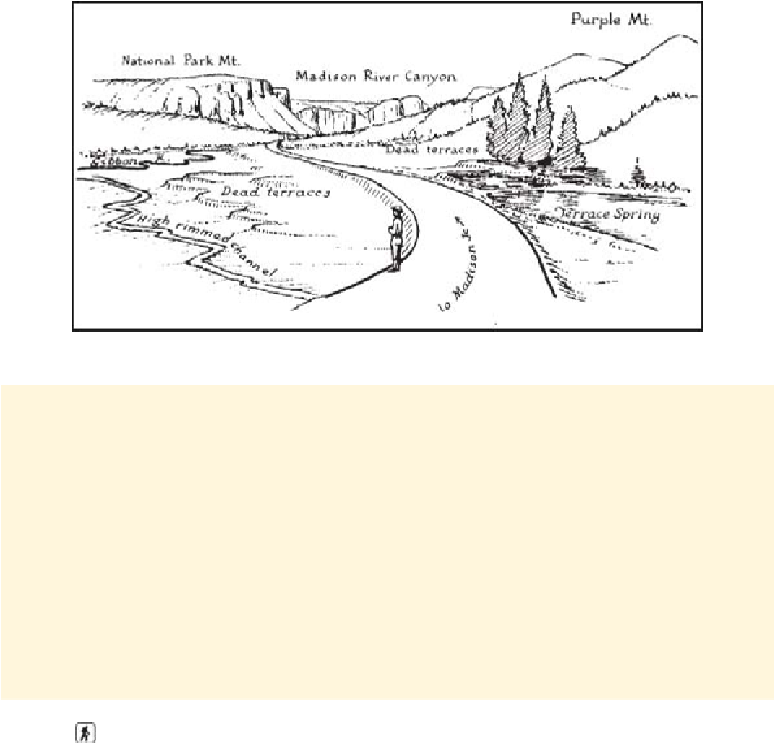Travel Reference
In-Depth Information
Orange and brown bacterial mats line the edges of the springs and their runoff channels.
Wildflowers grow in the steamy places—yellow monkeyflowers in some weeks of the summer
and purple fringed gentians along with tall yellow sunflowers in other weeks.
The Terrace Spring area looked like this to naturalist H. C. Bumpus in 1935.
Geology at Terrace Spring
The water at the north end of Terrace Spring appears to be boiling but has been measured
at only 141°F (61°C). The bubbling is due to carbon dioxide gas bubbles expanding as they
reach the surface of the water.
Terrace Spring is an unusual place in the park, in that the waters of the springs deposit
both siliceous sinter and calcareous travertine. The deposits of sinter on the surface are to
be expected, since the hot water comes up through rhyolite lava rich in silica. However, it's
something of a mystery where the travertine comes from, since it has to come from rocks
rich in calcium. The calcium and carbon dioxide could have risen up through cracks in the
rock that extend from deeply buried older limestones through the rhyolite lavas.
13.2/0.2 Purple Mountain Trail head.
This trail can take you about 1,600 feet up (490 m)
in about 3 miles (5 km) to a spectacular view in all directions.
Purple Mountain was named for the color of the rock it's made of. The welded tuff (or vol-
canic ash fall) contains pink crystals of a variety of the mineral feldspar that here is rich in
potassium, giving an overall purplish color to the rock.

